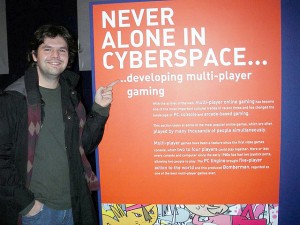
Alice Goffman’s On the Run: Fugitive Life in an American City shares the stories of young men evading arrest for crimes ranging from unpaid fines to murder. In describing their day-to-day maneuvers under heavy surveillance, she brings to life the impact of the U.S. prison boom on members of a low-income African American neighborhood in Philadelphia. But her work was not without risk. According to the Philadelphia Inquirer,
By the time Goffman left Sixth Street, she was displaying symptoms reminiscent of post-traumatic stress disorder, such as panicking at sudden noises.
In fact, so compelling is Goffman’s ethnography–and the great lengths she goes to in getting it–that the Inquirer is not alone in its eagerness to share her story. The New York Times writes:
Though written in a sober, scholarly style, “On the Run” contains enough street-level detail to fill a season of “The Wire,” along with plenty of screen-ready moments involving the author herself, who describes, among other ordeals, being thrown to the floor and handcuffed during a police raid, enduring a harrowing precinct house interrogation and watching a man be shot to death after exiting her car.
But the attention lavished on Goffman’s work has been mixed. On the one hand, her extreme ethnography is technically demanding and dangerous. She gives us a sympathetic and sociological glimpse of a world that’s usually off-limits to outsiders. On the other, she is “hardly the first middle-class white observer to venture into black urban America and emerge with a marketable story to tell,” as the New York Times puts it. Given this bipolar public gaze, Goffman may find it every bit as dicey to take a position in the spotlight as in the field.
Goffman acknowledges this awkwardness to the Times: “It just feels morally strange to talk about my own experiences when a whole community is dealing with violence and getting arrested…. I could always just leave.” To the Inquirer, she insists, “For the residents…there’s no ‘post’: ‘It’s just traumatic. This is everyday life: a series of ongoing and acute traumas.’”
It appears she’s already working on her next professional challenge: coaxing the spotlight back onto the the 47,000 fugitives living in fear in Philadelphia in 2009, avoiding hospitals and skipping friends’ funerals to avoid surveillance, worrying about eviction and losing custody of their children.
—–
According to the Editor’s Desk, ethnography sells. Here’s one example of how it’s used in corporate America: https://thesocietypages.org/editors/2013/05/07/corporate-anthropology/
SociologyLens caught Gang Leader for a Day, Sudhir Venkatesh, explaining extreme ethnography: https://thesocietypages.org/sociologylens/tag/sudhir-venkatesh/








